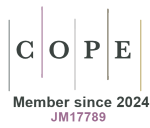Budget Impact analysis on models of purchase and management of aids for urinary incontinence compared
DOI:
https://doi.org/10.33393/grhta.2018.447Keywords:
Budget Impact, Urinary IncontinenceAbstract
Introduction: Urinary Incontinence (UI) is a chronic condition affecting mainly elderly people, thus the budget to deal with is foreseen to grow significantly, especially in Italy, where there is a combination of private and public buying. In 2015, the Italian National Health System (NHS) spent 355 million Euros to provide pads to UI, while the out-of-pocket expenditure for the patients was 233 million Euros. The study aims to evaluate the impact of two different UI buying pathway by performing a Budget Impact Analysis (BIA) vs current model. Methods: Three different scenarios were compared over a period of 3 years. Scenario 1 (“As is”), based on current model (2016-2017 expenditure), was compared to the: Scenario 2 (“Voucher”), implying the introduction of vouchers to entitle patients to acquire pads in the private channel without NHS tenders; Scenario 3 (“Tender management Optimization”) is based on an optimization of provided from NHS pads, according to patients UI severity. Results: Scenario 2 implies increase of NHS expenditure of 262 million Euros in the 2020, while Scenario 3 generates 21 million of savings vs scenario 1. Conclusions: The study indicates that the introduction of a new pathway in managing UI such as Scenario 3, could be sustainable for NHS and generate significant savings both for NHS and patient perspective.










